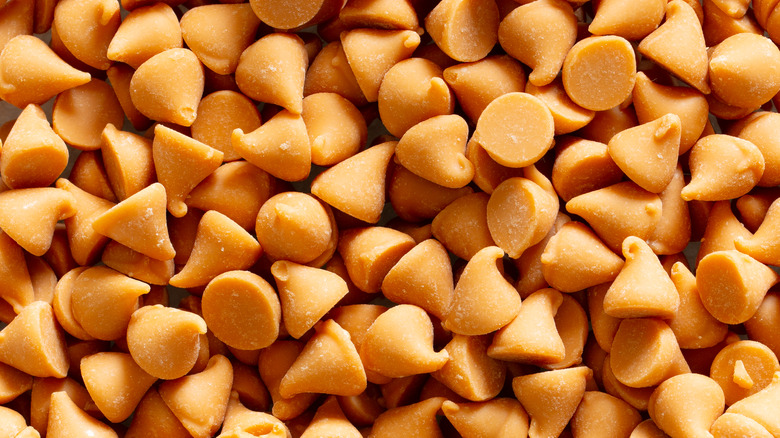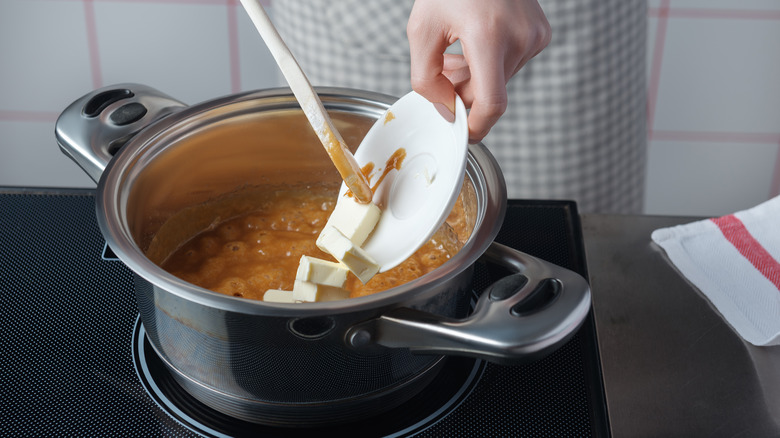Butterscotch May Seem Similar To Caramel, But It's Not
Many people assume that butterscotch and caramel are interchangeable ingredients. While they do look and taste similar, and share some of the same ingredients, they are distinct confections. In its simplest form, caramel is made by heating white granulated sugar, known as dry caramel. The sugar is melted in a saucepan until it becomes a liquid and starts to caramelize, resulting in its brown color. Dry caramel can be difficult to make, which is why many people opt for wet caramel, a mixture of white sugar and water cooked until it caramelizes. It's common to add ingredients like milk, cream, butter, and vanilla to both dry and wet caramel to enhance texture and flavor.
Butterscotch, on the other hand, is created by cooking butter and brown sugar together until the mixture melts, thickens, and caramelizes. Once liquefied, cream and other flavorings like vanilla and sea salt are added. The flavor of butterscotch is generally deeper than that of caramel, largely because brown sugar contains molasses, which already has a rich flavor.
Caramel predates butterscotch by almost 900 years, likely because brown sugar wasn't invented until long after caramel was established. Despite their differences, both sweets are excellent additions to desserts, coffee drinks, and baked goods.
Caramel came first
Caramel is said to have originated around 1,000 A.D. among the Arabs, not for consumption but for beauty purposes. Sugar and water were mixed to create a substance used for hair removal. It wasn't until the 14th century that people discovered adding milk and cream to caramel made it creamier and less prone to hardening quickly. Butterscotch, on the other hand, didn't appear on the culinary scene until 1817. It is believed that an English candy maker named Samuel Parkinson was the first to turn it into candy. The long gap between the origins of caramel and the emergence of butterscotch makes sense, as brown sugar wasn't created until the 1700s in the Caribbean.
Both caramel and butterscotch can be made into hard candies, used as sauces, or serve as toppings for ice cream, cakes, and other desserts. Similarly, either can be used as a syrup for lattes, hot chocolates, and other sweet beverages. Caramel is the classic choice for pairing with apples and popcorn, while butterscotch is the go-to addition for cookies (as in butterscotch chips), pies, and puddings. Fans of either — or both — know that they pair excellently with flavors like peanut butter, banana, and chocolate.


